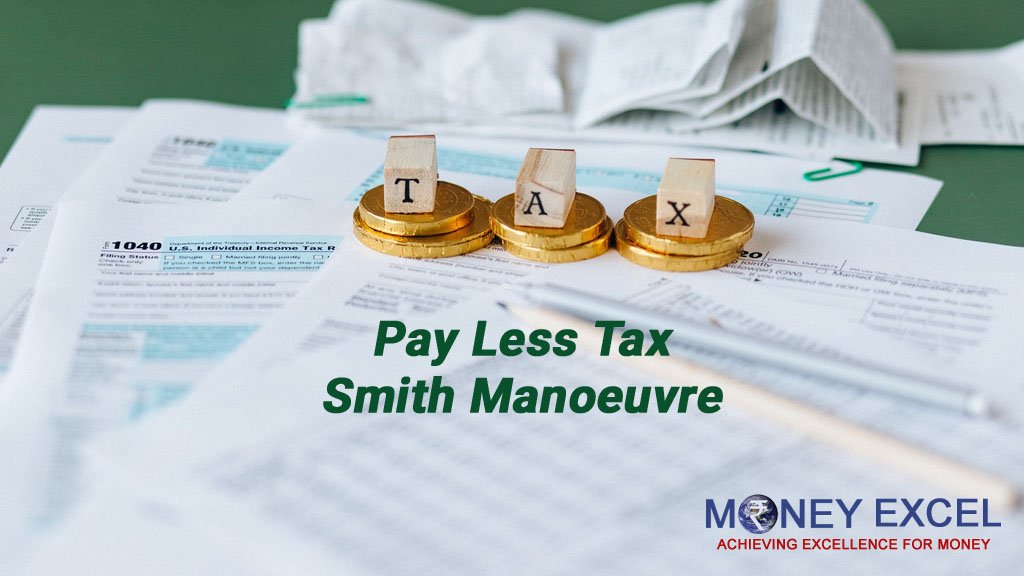If you’re thinking that the Smith Manoeuvre sounds like a sophisticated legal tax strategy that makes your mortgage interest payments tax-deductible, you’re absolutely right – always trust your hunch!
The Smith Manoeuvre is exclusively a Canadian tax strategy that is designed to help you cut your tax bill. It comes at a convenient time in talking about this, because whilst interest rates are still low in the grand scheme of things, Canada has risen its interest rates to 1% from 0.25% at the beginning of the year, meaning that those who are getting a new mortgage or are currently on a variable interest contract will be seeing rises in their monthly repayments.
At its core, the Smith Manoeuvre is about maximising the Return on Investment when buying a home. Many people do not see their home as being an investment, but that can be a costly mistake. Whilst it’s the place we live, it’s most people’s largest asset, meaning it’s the most significant investment in their portfolio – whether they treat it as such or not.

What exactly is the Smith Manoeuvre?
The Smith Manoeuvre allows you to treat your mortgage interest payments as being tax-deductible, meaning you could then pay off the mortgage even faster.
Treating your home as an investment isn’t just about having a financially literate mindset – it’s actually crucial to the inner workings of this tax strategy. Basically, the interest you pay on a loan that is for an investment is tax-deductible. So, if you took out a loan in order to invest in some stocks, these repayments would be tax-deductible – but only if the stock paid out dividends.
So what this manoeuvre is all about is turning your mortgage into an investment loan, so that the interest repayments can then be deducted from your tax bill.
How to do the Smith Manoeuvre?
In order to do the Smith Manoeuvre, you will need both a readvanceable mortgage and a home equity line of credit (HELOC). This can sound overwhelming, so let’s look at it piece by piece.
A readvanaceable mortgage is essentially a way to combine a mortgage with a line of credit. A HELOC is essentially a way to tap into the home equity in order to access credit at a low interest. This is an easy way to borrow and repay in a way that’s more affordable than an unsecured loan.
So, when combining these two together, you have a situation where you make more payments for your mortgage, the credit limit on the HELOC increases. So, the more you pay off your mortgage, the more money you can borrow. Of course, it’s the principal repayments that increase the credit limit, so an interest-only mortgage would not work. Banks tend to let you borrow up to 65% of your home’s value, but this can differ.
So, you can now borrow money from money that you have already repaid. It may sound pointless, but it actually opens you up to a lot of flexibility if you need money quickly. It also means you have access to your home equity, meaning you wouldn’t need to refinance your mortgage if you wanted to dip into some.
But the main point of all of this is that this line of credit can be turned into an investable loan. This “pointless” re-borrowing is actually how you can turn your mortgage repayments into being tax-deductible. The only way this can be tax-deductible is if we invest this line of credit money into an income-generating investment (remember, a non-dividend-paying stock wouldn’t count).
You can calculate the tax return on the interest paid regarding the investment loan if you multiply the total interest paid (that year) by the marginal tax rate. So, if you paid $2,000 in interest this year and you’re in the 40% marginal tax bracket, you would receive $800 back from the government. This could be used to further repay the mortgage faster.
Benefits and Risks of the Smith Manoeuvre
Of course, this is a powerful way to build a large investment portfolio without having to wait for your mortgage to be paid off. Investing more earlier on means having way more scope for compounded returns – arguably the most important phenomenon in wealth building.
Overpaying your non-deductible mortgage quickly also has its advantages of course, and this all becomes even more lucrative when you’re in a higher tax bracket.
But, there are some risks. This is essentially an aggressive form of leveraging, which many people are not comfortable with. You’re investing through debt, which obviously has its own risks that need to be closely assessed, and it can also be difficult mentally if your investments perform poorly.
Furthermore, this can become a sticky situation if you suddenly need to move house. If the home’s value is temporarily down, you need to ensure that the portfolio can cover the loan (at least). This means having a relatively conservative portfolio, or perhaps an existing portfolio before performing the Smith Manoeuvre.
Should I do the Smith Manoeuvre?
There are many factors that come into play here, particularly subjective factors like your personality and risk tolerance. However, the most important thing to consider is the investments you make and your time frame. If you’re at all expecting to need to liquidate some of your investments within the next 5-10 years, then this would be too risky.
The reason for this is that markets are constantly up and down. One crash could slice your index fund in half, taking 5+ years to recover. This isn’t so scary if you’re ultra-flexible in riding out the waves, because the 100+ year history of such markets tells us that they always do rebound eventually and continue to grow. It would also be very risky to hand-pick stocks or even industries, as this opens you up to the potential of underperforming the market average. Whilst the S&P 500 has proved to rebound after every major crash/recession, can Uber’s 13-year trading history claim the same?

